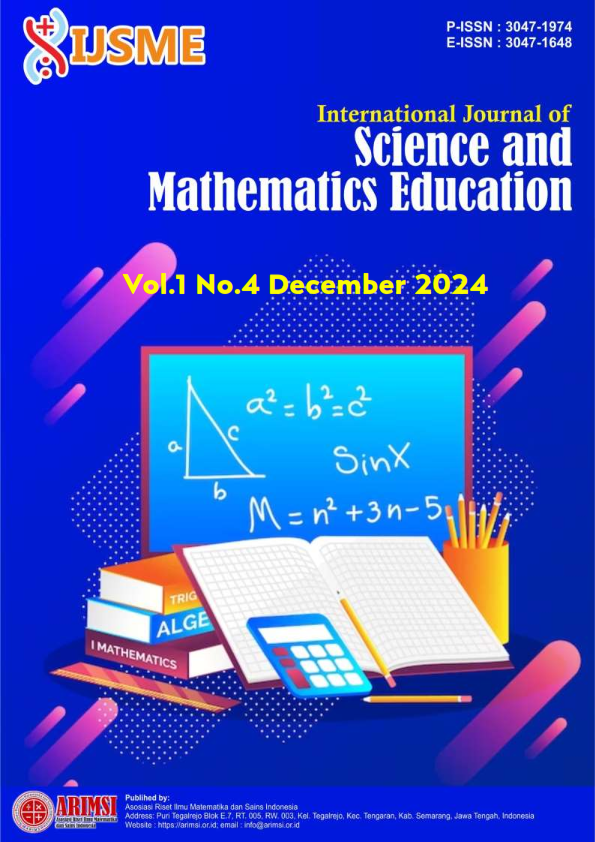A Review Of Solving and Applications Singularly Perturbed Problems
DOI:
https://doi.org/10.62951/ijsme.v1i4.28Keywords:
Spline method, Convection,Diffusion, Singularly-Perturrbed boundary, Value problemsAbstract
In this paper, Spline techniques have become prominent lately due to their effectiveness in addressing singular perturbation boundary value problems. These issues, defined by a boundary layer or a minor parameter associated with a derivative term, pose difficulties due to swift fluctuations in solutions adjacent to the boundary. Solutions to singularly perturbed involving both positive and negative changes in a spatial variable are shown in this review article. The methods presented here are algorithmic in nature. The singular perturbation that arises in neural activity simulation and the approaches proposed by numerous investigators between 2004 and 2024 are the only ones covered in this review. A variety of types of singularly perturbed were reviewed, including ordinary delay differential . Discovering what numerical and analytical strategies have been created in the past decade to address these types of issues is the primary objective of this review. Its secondary objective is to encourage academics to come up with novel, strong approaches to resolving related issues.
References
Ayalew, M., Kiltu, G. G., & Duressa, G. F. (2021). Fitted numerical scheme for second-order singularly perturbed differential-difference equations with mixed shifts. Abstract and Applied Analysis, 2021.
Debela, H. G., & Duressa, G. F. (2019). Exponentially fitted finite difference method for singularly perturbed delay differential equations with integral boundary condition. International Journal of Engineering and Applied Sciences, 11(4), 476–493.
Debela, H. G., & Duressa, G. F. (2020). Accelerated exponentially fitted operator method for singularly perturbed problems with integral boundary condition. International Journal of Differential Equations, 2020.
Debela, H. G., & Duressa, G. F. (2020). Accelerated fitted operator finite difference method for singularly perturbed delay differential equations with non-local boundary condition. Journal of the Egyptian Mathematical Society, 28, 1–16.
Duressa, G. F., Daba, I. T., & Deressa, C. T. (2023). A systematic review on the solution methodology of singularly perturbed differential difference equations. Mathematics, 11(5), 1108. https://doi.org/10.3390/math11051108
File, G., & Reddy, Y. N. (2012). Fitted-modified upwind finite difference method for solving singularly perturbed differential difference equations. International Journal of Mathematical Models and Methods in Applied Sciences, 6(7), 791–802.
Gadisa, G., File, G., & Aga, T. (2018). Fourth order numerical method for singularly perturbed delay differential equations. International Journal of Applied Science and Engineering, 15(1), 17–32.
Geng, F., Tang, Z., & Zhou, Y. (2018). Reproducing kernel method for singularly perturbed one-dimensional initial-boundary value problems with exponential initial layers. Qualitative Theory of Dynamical Systems, 17(1), 177–187.
Gold, R. R. (1962). Magneto hydrodynamic pipe flow, Part I. Journal of Fluid Mechanics, 13, 505–512.
Gunes, B., & Duru, H. (2022). A second-order difference scheme for the singularly perturbed Sobolev problems with third type boundary conditions on Bakhvalov mesh. Journal of Differential Equations and Applications, 28(3), 385–405.
Habib, H. M., & El-Zahar, E. R. (2007). An algorithm for solving singular perturbation problems with mechanization. Applied Mathematics and Computation, 188(1), 286–302.
Jiwari, R. (2022). Local radial basis function-finite difference based algorithms for singularly perturbed Burgers’ model. Mathematics and Computers in Simulation, 198, 106–126.
Kadalbajoo, M. K., & Kumar, D. (2009). Initial value technique for singularly perturbed two point boundary value problems using an exponentially fitted finite difference scheme. Computers and Mathematics with Applications, 57(7), 1147–1156.
Kumar, M., Mishra, H. K., & Singh, P. (2009). A boundary value approach for a class of linear singularly perturbed boundary value problems. Advances in Engineering Software, 40(4), 298–304.
Miller, J. J. H., O’Riordan, E., & Shishkin, G. I. (2012). Fitted numerical methods for singular perturbation problems: Error estimates in the maximum norm for linear problems in one and two dimensions. World Scientific.
Mishra, H., & Saini, S. (2013). Numerical solution of singularly perturbed two-point boundary value problem via Liouville-Green transform. American Journal of Computational Mathematics, 3(1), 1–5.
Mushahary, P., Sahu, S. R., & Mohapatra, J. (2020). A parameter uniform numerical scheme for singularly perturbed differential-difference equations with mixed shifts. Journal of Applied and Computational Mechanics, 6(2), 344–356.
Rai, P., & Sharma, K. K. (2015). Singularly perturbed convection-diffusion turning point problem with shifts. In Springer Proceedings in Mathematics & Statistics (pp. 381–391). Springer India.
Ranjan, R., & Prasad, H. S. (2021). A novel approach for the numerical approximation to the solution of singularly perturbed differential-difference equations with small shifts. Journal of Applied Mathematics and Computation, 65(1–2), 403–427.
Ranjan, R., & Prasad, H. S. (2022). A novel exponentially fitted finite difference method for a class of 2nd order singularly perturbed boundary value problems with a simple turning point exhibiting twin boundary layers. Journal of Ambient Intelligence and Humanized Computing, 13(9), 4207–4221.
Roos, H.-G. (2012). Robust numerical methods for singularly perturbed differential equations: A survey covering 2008–2012. ISRN Applied Mathematics, 2012, 1–30.
Subburayan, V., & Ramanujam, N. (2012). Asymptotic initial value technique for singularly perturbed convection–diffusion delay problems with boundary and weak interior layers. Applied Mathematics Letters, 25(12), 2272–2278.
Wang, X.-Y., & Jiang, Y.-L. (2005). A general method for solving singular perturbed impulsive differential equations with two-point boundary conditions. Applied Mathematics and Computation, 171(2), 775–806.
Woldaregay, M. M., & Duressa, G. F. (2021). Robust numerical scheme for solving singularly perturbed differential equations involving small delays. Applied Mathematics E-Notes, 21, 622–633.
Zarin, H. (2014). On discontinuous Galerkin finite element method for singularly perturbed delay differential equations. Applied Mathematics Letters, 38, 27–32.
Downloads
Published
How to Cite
Issue
Section
License
Copyright (c) 2024 International Journal of Science and Mathematics Education

This work is licensed under a Creative Commons Attribution-ShareAlike 4.0 International License.





